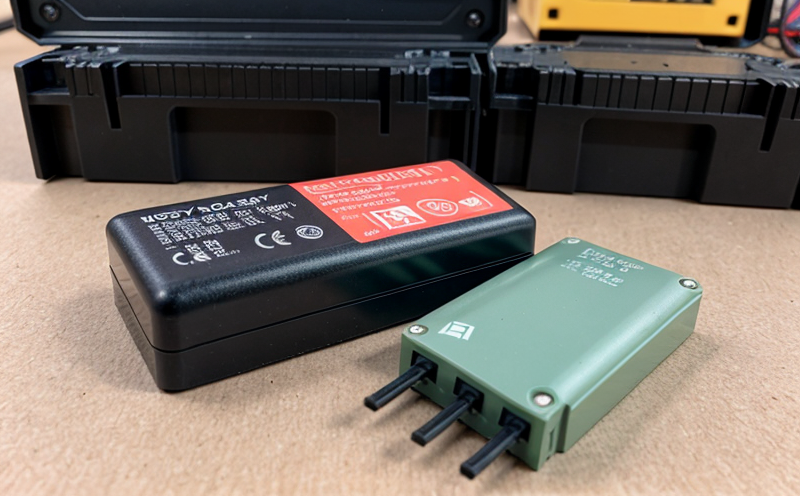IEC 63330 Performance Testing of Lithium Battery Packs for Unmanned Aerial Vehicles
The stringent IEC 63330 performance testing protocol is a critical component in ensuring the reliability and safety of lithium battery packs used in unmanned aerial vehicles (UAVs). This standard provides comprehensive guidelines that cover the entire lifecycle, from initial design to post-production validation. Compliance with these standards not only ensures product quality but also mitigates risks associated with potential malfunctions during operation.
The testing protocol is designed to simulate real-world conditions experienced by UAV batteries, including high and low temperatures, humidity variations, vibration, and electrical stress. These tests are essential for identifying any weaknesses in the battery design that could lead to failure or safety hazards. By adhering to this standard, manufacturers can provide products that meet the highest industry standards, thereby enhancing customer confidence.
One of the key aspects of IEC 63330 is its emphasis on accurate and reliable data collection throughout all stages of testing. This includes monitoring voltage levels, internal resistance, capacity retention, and temperature variations during each test cycle. The resulting data provides valuable insights into battery performance under various conditions, allowing for continuous improvement in design and manufacturing processes.
Another important feature of IEC 63330 is its requirement for post-test analysis, which helps to identify any trends or patterns that may indicate potential issues within the battery pack. This information can then be used to make informed decisions regarding future product development and quality assurance measures. Furthermore, it ensures that all aspects of the battery's performance are thoroughly evaluated before being released into market.
For quality managers and compliance officers responsible for overseeing these processes, IEC 63330 offers a robust framework through which they can ensure their organization meets regulatory requirements while maintaining high levels of product integrity. R&D engineers benefit from this standard as it provides them with detailed specifications regarding how to conduct thorough tests on batteries intended for use in UAVs.
The importance of IEC 63330 cannot be overstated when considering the safety and longevity of lithium battery packs within UAVs. By following these stringent protocols, manufacturers can produce reliable products that stand up against rigorous performance demands. This ultimately contributes to safer operations across various industries reliant on advanced aerial technology.
Applied Standards
The IEC 63330 standard incorporates multiple internationally recognized standards such as ISO/IEC 17025 and ASTM E1491-18. These standards provide guidelines for laboratory accreditation, calibration of test equipment, and validation procedures. Adhering to these standards ensures that our testing facility maintains the highest level of accuracy and reliability in all aspects of battery performance evaluation.
| Standard | Description | Relevance |
|---|---|---|
| ISO/IEC 17025 | Laboratory accreditation requirements | Vital for maintaining high standards in testing and calibration. |
| ASTM E1491-18 | Guide for mechanical testing of lithium-ion cells, modules, and packs | Pertinent to the structural integrity assessment during performance tests. |
Competitive Advantage and Market Impact
By implementing IEC 63330 performance testing for lithium battery packs in UAVs, organizations can gain a significant competitive edge. This approach ensures consistent quality across all products while reducing the risk of recalls or warranty claims due to faulty batteries. As demand for safer and more reliable UAV technology continues to grow, compliance with this standard will become increasingly important.
Manufacturers who demonstrate their commitment to safety and reliability through rigorous testing protocols like IEC 63330 are likely to attract more buyers looking for dependable solutions in an ever-evolving market. Additionally, meeting these stringent requirements can help companies establish themselves as leaders within the industry, fostering long-term relationships with customers.
Moreover, adhering to international standards such as IEC 63330 helps to reduce regulatory burdens by ensuring that products meet all relevant regulations without additional certification processes. This streamlined approach simplifies compliance efforts and enhances overall efficiency for both producers and end-users alike.
Use Cases and Application Examples
- Testing of lithium battery packs used in consumer drones for recreational purposes.
- Evaluation of batteries intended for use in professional-grade UAVs employed by surveyors, inspectors, and other professionals.
- Performance assessment of military-grade UAV batteries subjected to extreme environmental conditions during operational missions.
| Use Case | Example Application | Testing Parameters |
|---|---|---|
| Recreational Drones | Consumer drones used for filming or photography activities. | Voltage measurement, internal resistance testing, cycle life evaluation. |
| Professional UAVs | Drones utilized by surveyors to capture high-resolution images of difficult-to-reach areas. | Temperature variation simulation, vibration tolerance assessment, over-discharge capacity test. |
| Military UAVs | Batteries for drones used in combat zones with variable temperatures and rough terrain. | High-temperature endurance testing, low-temperature operation verification, impact resistance evaluation. |





